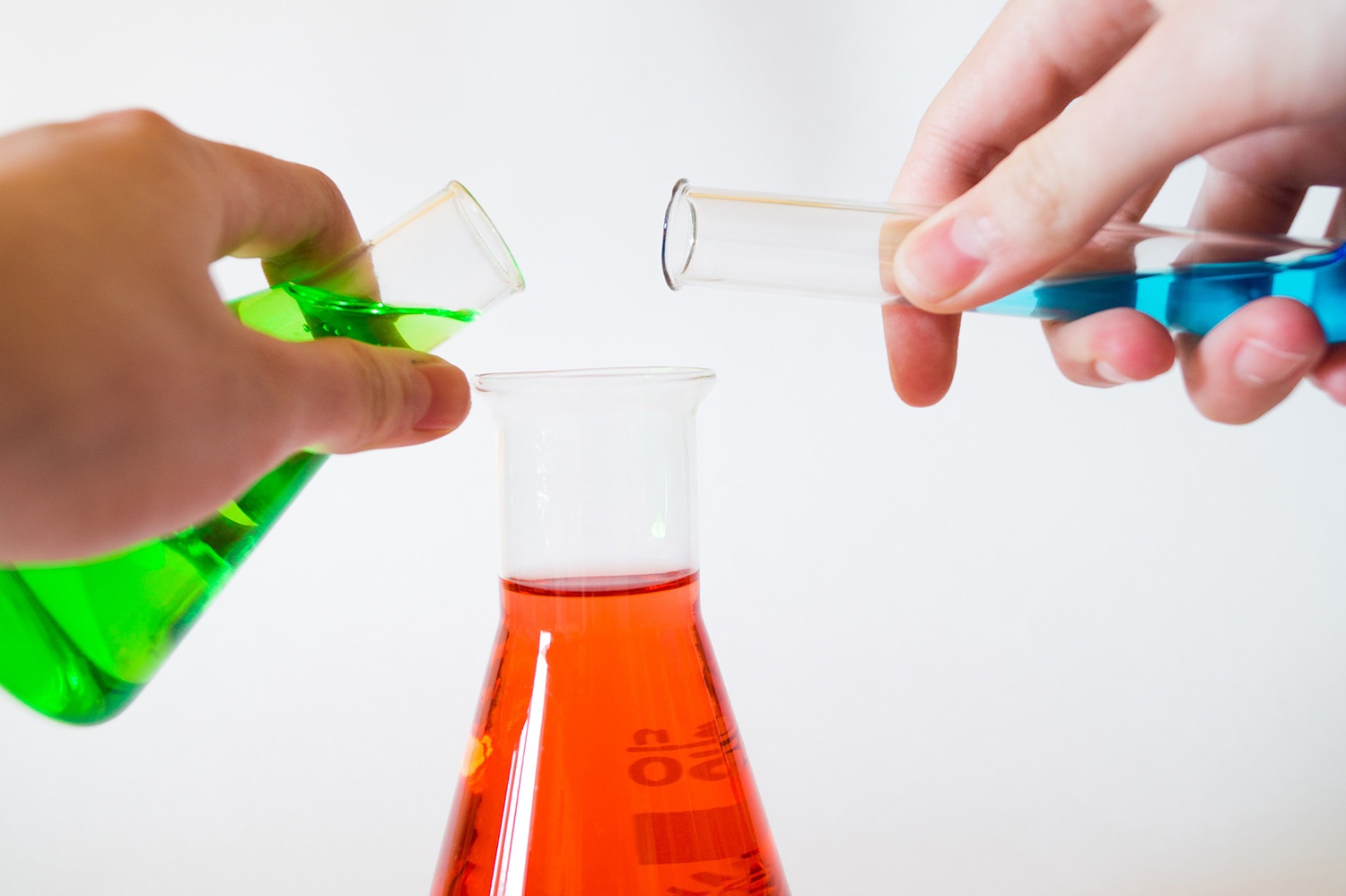
Solution, in the field of chemistry, is a term that refers to a homogenous mixture composed of two or more substances. It is a fundamental concept that plays a crucial role in various scientific and everyday applications. From chemical reactions to pharmaceutical formulations, solutions are an integral part of our lives.
In this article, we will explore 14 astounding facts about solutions that will not only deepen your understanding of this topic but also inspire awe for the wonders of the chemical world. Whether you are a student, a chemistry enthusiast, or simply curious about the mysteries of science, these facts will surely captivate your interest.
So, let’s dive into the world of solutions and uncover some fascinating insights about their properties, types, and exceptional applications!
Key Takeaways:
- Solutions are mixtures that can be solid, liquid, or gas, and they play a crucial role in everyday life, from cooking and cleaning to electronics and medicine.
- The pH of a solution determines its acidity or basicity, and solutions can undergo chemical reactions, creating new substances with different properties.
Solutions are homogenous mixtures.
A solution is a mixture in which the solute (substance being dissolved) is evenly distributed throughout the solvent (substance doing the dissolving). This creates a uniform and homogeneous mixture.
Solutions can be solid, liquid, or gas.
Solutions are not limited to a specific state of matter. You can have solid solutions like alloys, liquid solutions like saltwater, and gaseous solutions like air.
Solutions can be formed by dissolving different substances in a solvent.
A solution can be created by dissolving a solute into a solvent. The solute particles break apart and become dispersed in the solvent particles.
Solutions can be transparent or translucent.
Depending on the nature and concentration of the solute, solutions can vary in their transparency. Some solutions are completely transparent, while others may appear translucent due to the presence of suspended particles.
The solute concentration in a solution can be expressed in various units.
The concentration of a solute in a solution can be measured and expressed in different ways, such as molarity, molality, mass percent, and parts per million.
Solutions can be separated using different techniques.
To separate the solute from a solution, techniques like evaporation, distillation, and filtration can be employed depending on the nature of the solute and solvent.
Solubility is the maximum amount of solute that can dissolve in a solvent at a given temperature.
The solubility of a substance is influenced by factors such as temperature, pressure, and the nature of the solute and solvent. It determines the maximum amount of solute that can dissolve in a given solvent at a specific temperature.
Solutions can exhibit colligative properties.
Colligative properties are properties of a solution that depend on the number of solute particles present, regardless of their identity. Examples include boiling point elevation, freezing point depression, and osmotic pressure.
Solutions play a crucial role in various industries.
Solutions are used extensively in industries such as pharmaceuticals, food and beverage, chemical manufacturing, and many more. They are essential for processes like drug formulation, flavoring, and chemical reactions.
Solutions are vital in biological systems.
In biological systems, solutions play a fundamental role in processes like nutrient absorption, waste removal, and cell functions. The body utilizes various types of solutions to maintain homeostasis.
Solutions have a wide range of applications in everyday life.
Solutions are all around us and have countless applications in our daily lives. From cooking and cleaning to personal care products and even electronics, solutions are an integral part of our routines.
Solutions can be used to create new materials.
Solutions are often used in the synthesis of new materials. By carefully controlling the solute-solvent ratio and other conditions, researchers can create innovative materials with desired properties.
The pH of a solution determines its acidity or basicity.
The pH scale measures the acidity or basicity of a solution. A pH of 7 is considered neutral, while values lower than 7 indicate acidity and values higher than 7 indicate basicity.
Solutions can undergo chemical reactions.
Even though solutions are homogenous mixtures, the solute and solvent can still undergo chemical reactions. These reactions may result in the formation of new substances with different properties.
These 14 astounding facts about solutions showcase the diversity and importance of this concept in various fields. Solutions are not only essential in scientific and industrial settings but also play a crucial role in our everyday lives.
From the solubility of substances to the colligative properties they exhibit, solutions offer a fascinating array of phenomena to explore. Understanding the properties and behavior of solutions is vital for advancements in fields like materials science, medicine, and environmental studies.
So, the next time you encounter a solution, remember these 14 astounding facts and appreciate the remarkable nature of this ubiquitous concept.
Conclusion
In conclusion, solutions are a fundamental aspect of chemistry that plays a crucial role in various fields of study and practical applications. Solutions are formed when solutes are dissolved in solvents, creating a homogenous mixture. They can be found everywhere around us, from the liquids we drink to the air we breathe.Understanding solutions is essential because they exhibit unique properties that differ from their individual components. These properties include boiling point elevation, freezing point depression, and colligative properties. By altering the concentration, temperature, or pressure, we can manipulate these properties for various purposes.Moreover, solutions contribute to crucial processes such as chemical reactions, biological functions, and environmental phenomena. They serve as solvents for combining reactants, transporting nutrients in living organisms, and facilitating reactions in the atmosphere, among others.Overall, solutions provide us with endless possibilities and are the foundation of many scientific advancements and practical applications. So next time you pour a cup of coffee, remember to appreciate the remarkable chemistry behind that simple solution.
FAQs
Q: What is a solution in chemistry?
A: In chemistry, a solution refers to a homogenous mixture consisting of a solute dissolved in a solvent. The solute is the substance being dissolved, while the solvent is the substance that dissolves the solute.
Q: How do solutions form?
A: Solutions form when the intermolecular forces between the solute and solvent overpower the attractive forces within the individual components. This allows the solute particles to mix uniformly with the solvent particles.
Q: What are colligative properties of solutions?
A: Colligative properties of solutions are characteristics that depend solely on the number of solute particles present, regardless of their nature. Examples include boiling point elevation, freezing point depression, and osmotic pressure.
Q: Can solutions have different concentrations?
A: Yes, solutions can have different concentrations depending on the amount of solute present relative to the amount of solvent. Concentration can be expressed in various units, including molarity, molality, and percent by mass or volume.
Q: What are some practical applications of solutions?
A: Solutions have countless practical applications in our daily lives and various industries. They are used in medicine for drug administration, in environmental science for water treatment, in food industry for food preservation, and in many other fields.
Solutions surround us, playing crucial roles in our daily lives and various industries. From the fascinating world of aqueous solutions to the intriguing properties of solutes, there's so much more to explore. Unravel the mysteries of aqueous mixtures, be amazed by unbelievable facts about aqueous solutions, and gain a deeper understanding of solutes' captivating characteristics. Embark on a journey of discovery as you delve into these enthralling topics, expanding your knowledge and appreciation for the remarkable world of solutions.
Was this page helpful?
Our commitment to delivering trustworthy and engaging content is at the heart of what we do. Each fact on our site is contributed by real users like you, bringing a wealth of diverse insights and information. To ensure the highest standards of accuracy and reliability, our dedicated editors meticulously review each submission. This process guarantees that the facts we share are not only fascinating but also credible. Trust in our commitment to quality and authenticity as you explore and learn with us.


